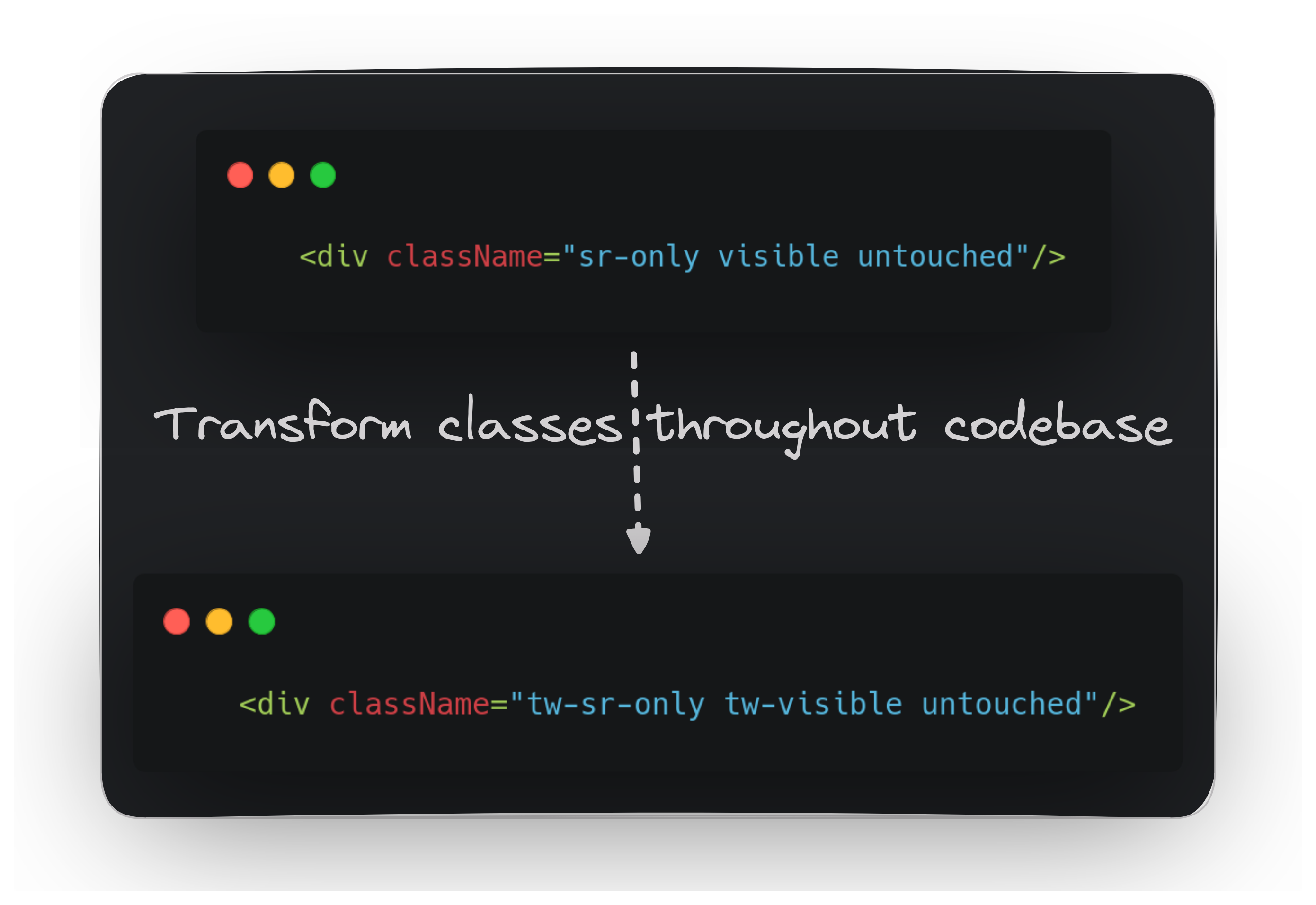
How to safely deprecate old tailwind utility classes
I made a tool to help you deprecate tailwind utility classes from and old tailwind config file
The Problem
You joined a project that has some awful old tailwind configs: weird bespoke spacing configuration, weird sizes, some current tailwind default colors (e.g. slate) not available because the config was for an older version of tailwind, etc…
So now you can’t just copy/paste tailwind class names from the internet or use ones that come from a ui component library. Say you want to use shadcn/ui; Nope!
You want to do something about this, but it’s way too risky and time consuming. You would want to do this incrementally, to protect your sanity.
The best solution would be to deprecate the old configs while keeping them around and working; so you slap a prefix legacy-
in the old tailwind.config.js.
Deprecation Steps
In the root of your project. Run:
echo '@tailwind base; @tailwind components; @tailwind utilities;' > temp.css
npx tailwindcss -i temp.css -o legacy-tw.css
cnat prefix -i legacy-tw.css --prefix 'legacy-' ./srcPro Tip: Run your code formatter before running cnat. Check the formatted code into version control.
Then run the command, and run your code formatter again. Now you can go through and check the git diffs to make sure everything is
alright.
By default, cnat prefix will crawl through all the class=*, className=* in jsx elements and className:* in a React.createElement calls, inside of ts|js|tsx|jsx files.
It will match any class in the source code with classes found in legacy-tw.css (which contains every style that tailwind generates based on your config).
Rename the file for the old configs, tailwind.legacy.config.ts.
mv tailwind.config.ts tailwind.legacy.config.ts # or *.js if your tailwind config files aren't in typescriptAdd the prefix in the legacy config file.
export default {
prefix: "legacy-",
};Run the tailwind cli again to rebuild the legacy css classes.
npx tailwindcss -i temp.css -o legacy-tw.css -c tailwind.legacy.config.tsNow the css classes in legacy-tw.css will be prefixed since the tailwind.legacy.config.ts defined
the ‘legacy-’
Then, import the legacy css into your global css file.
@import "./legacy-tw.css";
@tailwind base;
@tailwind components;
@tailwind utilities;
/* And whatever else you have in here */Now you can re-init new configs.
# You'd have to delete the current `tailwind.config.ts` if you haven't already.
npx tailwindcss init --tsAnd now you can breathe. A fresh new start; ignoring what’s under the bed now.
Usage
cnat prefix --helpApply a prefix to all the tailwind classes in every js file in a project
Usage: cnat prefix [OPTIONS] -i <CSS_FILE> --prefix <PREFIX> <CONTEXT>
Arguments:
<CONTEXT> The root directory of the js/ts project
Options:
-i <CSS_FILE> The output css file generated by calling `npx tailwindcss -i input.css -o output.css`
-p, --prefix <PREFIX> The prefix to apply to all the tailwind class names found
-s, --scopes <SCOPES>... Define scope within which prefixing happens. Example: --scopes 'att:className,*ClassName prop:classes fn:cva' [default: "att:class,className fn:createElement"]
-h, --help Print helpScopes
You may have tailwind classes in other places besides className="...", or even cva(...).
For examples, the classes prop in mui components.
You can define places for cnat to look for classes with --scopes or -s option.
The syntax for a scope is
Variants are:
fnto target a function call (e.g ‘fn:cva’)attto target a jsx attribute (e.g. ‘att:className’)propto target a jsx attribute (e.g. ‘prop:className’)
Values are strings, and you can use a wildcard * at the beginning or the end.
For example ‘att:className att:*ClassName’ will find classes all of these attributes
<Btn
className="w-10 bg-red"
iconClassName="text-black"
textClassName="text-xl"
/>By default cnat use —scopes ‘att:class,className fn:createElement’
cnat prefix -i legacy-tw.css --prefix 'legacy-' ./src --scopes 'att:class,className fn:createElement'Source Code
Find the source code on github.